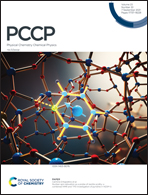Dichotomy between heterotypic and homotypic interactions by a common chemical law
Abstract
It is now well established that chemical systems evolve as a function of the frequency at which their individual chemical components interact. This notion is seemingly embedded into a ubiquitous chemical law which proposes that the rate of elementary chemical interactions is proportional to the Product of Interactant Concentrations (PIC) by a rate constant. Here, it is shown that, while the PIC is always proportional to the frequency at which interactants simultaneously collide (Interactant Collision Frequency, or ICF), the coefficient of proportionality between PIC and ICF diverges as a function of the number of identical interactants, a property hereby defined as “homo-molecularity”. To eliminate the divergence between heterotypic and homotypic chemical interactions, the PIC must be divided by the factorial of homo-molecularity. Although this correction may not be practically essential for studies in which the homo-molecularity of chemical interactions is unchanged, it becomes critical when the goal is to compare interaction rates between similar chemical systems differing by their homo-molecularity, such as when interactants are purposefully modified for de novo design of heterotypic interactions, or when the goal is to compare theoretically-predicted rates of homotypic interactions with those that are empirically-determined by varying interactant concentrations.

- This article is part of the themed collection: 2021 PCCP HOT Articles


 Please wait while we load your content...
Please wait while we load your content...